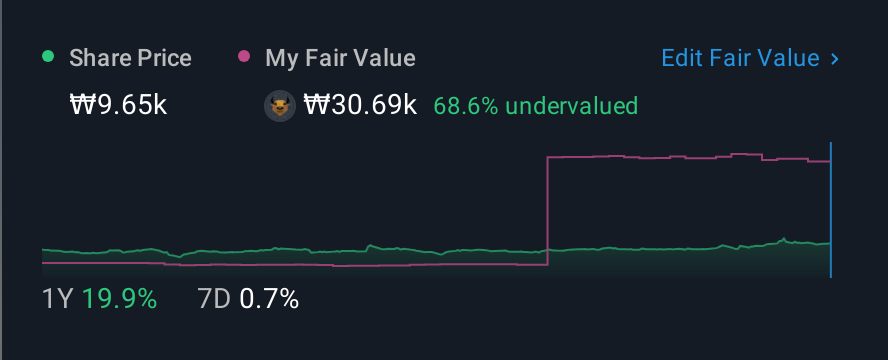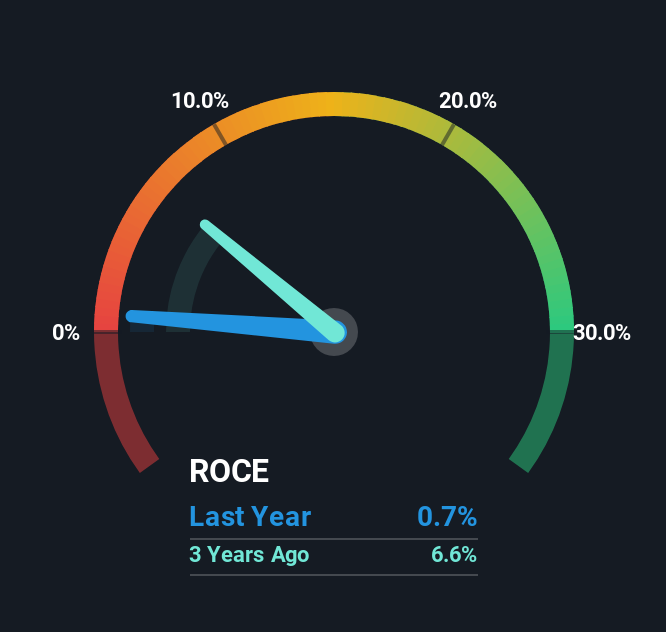- South Korea
- /
- Machinery
- /
- KOSDAQ:A105740
DK-Lok (KOSDAQ:105740) Might Be Having Difficulty Using Its Capital Effectively

If we want to find a stock that could multiply over the long term, what are the underlying trends we should look for? In a perfect world, we'd like to see a company investing more capital into its business and ideally the returns earned from that capital are also increasing. If you see this, it typically means it's a company with a great business model and plenty of profitable reinvestment opportunities. In light of that, when we looked at DK-Lok (KOSDAQ:105740) and its ROCE trend, we weren't exactly thrilled.
Understanding Return On Capital Employed (ROCE)
For those that aren't sure what ROCE is, it measures the amount of pre-tax profits a company can generate from the capital employed in its business. To calculate this metric for DK-Lok, this is the formula:
Return on Capital Employed = Earnings Before Interest and Tax (EBIT) ÷ (Total Assets - Current Liabilities)
0.0075 = ₩1.0b ÷ (₩210b - ₩73b) (Based on the trailing twelve months to March 2025).
So, DK-Lok has an ROCE of 0.7%. In absolute terms, that's a low return and it also under-performs the Machinery industry average of 6.5%.
Check out our latest analysis for DK-Lok

While the past is not representative of the future, it can be helpful to know how a company has performed historically, which is why we have this chart above. If you want to delve into the historical earnings , check out these free graphs detailing revenue and cash flow performance of DK-Lok.
What The Trend Of ROCE Can Tell Us
In terms of DK-Lok's historical ROCE movements, the trend isn't fantastic. Over the last five years, returns on capital have decreased to 0.7% from 7.9% five years ago. And considering revenue has dropped while employing more capital, we'd be cautious. If this were to continue, you might be looking at a company that is trying to reinvest for growth but is actually losing market share since sales haven't increased.
While on the subject, we noticed that the ratio of current liabilities to total assets has risen to 35%, which has impacted the ROCE. If current liabilities hadn't increased as much as they did, the ROCE could actually be even lower. Keep an eye on this ratio, because the business could encounter some new risks if this metric gets too high.
In Conclusion...
In summary, we're somewhat concerned by DK-Lok's diminishing returns on increasing amounts of capital. In spite of that, the stock has delivered a 19% return to shareholders who held over the last five years. Either way, we aren't huge fans of the current trends and so with that we think you might find better investments elsewhere.
One more thing to note, we've identified 4 warning signs with DK-Lok and understanding them should be part of your investment process.
While DK-Lok may not currently earn the highest returns, we've compiled a list of companies that currently earn more than 25% return on equity. Check out this free list here.
New: Manage All Your Stock Portfolios in One Place
We've created the ultimate portfolio companion for stock investors, and it's free.
• Connect an unlimited number of Portfolios and see your total in one currency
• Be alerted to new Warning Signs or Risks via email or mobile
• Track the Fair Value of your stocks
Have feedback on this article? Concerned about the content? Get in touch with us directly. Alternatively, email editorial-team (at) simplywallst.com.
This article by Simply Wall St is general in nature. We provide commentary based on historical data and analyst forecasts only using an unbiased methodology and our articles are not intended to be financial advice. It does not constitute a recommendation to buy or sell any stock, and does not take account of your objectives, or your financial situation. We aim to bring you long-term focused analysis driven by fundamental data. Note that our analysis may not factor in the latest price-sensitive company announcements or qualitative material. Simply Wall St has no position in any stocks mentioned.
About KOSDAQ:A105740
DK-Lok
Manufactures and sells fittings and valves in South Korea, the United States, Italy, the United Arab Emirates, Middle East, Asia, and Oceania.
Good value with adequate balance sheet.
Market Insights
Community Narratives



